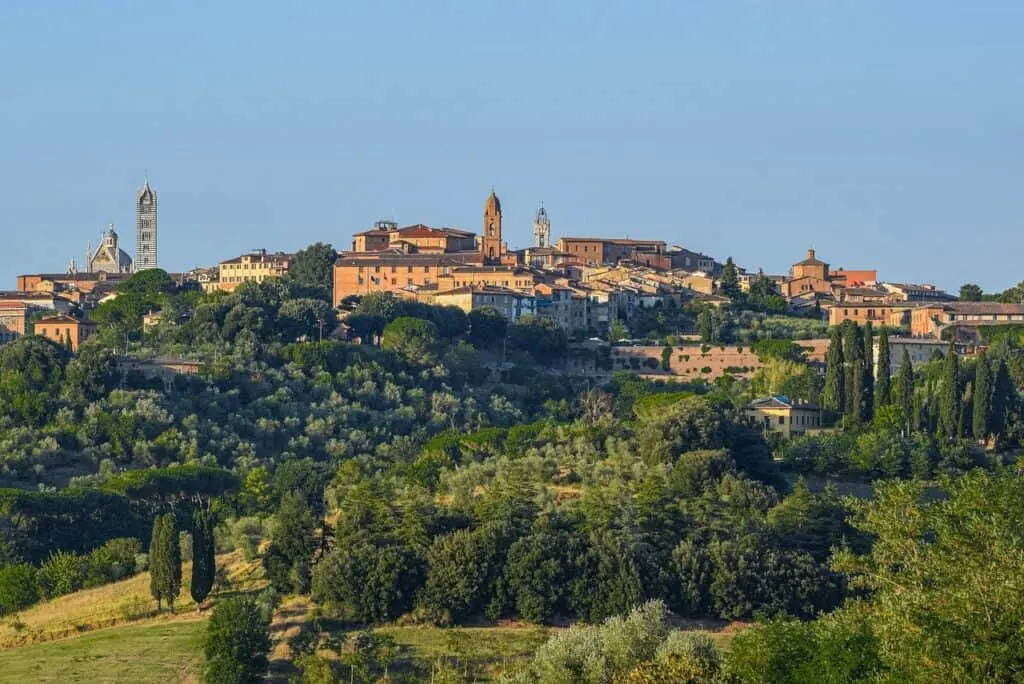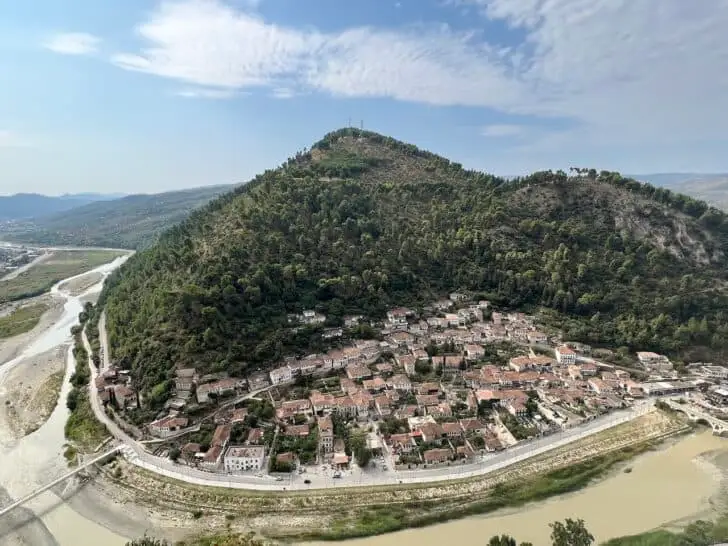Across Europe, there are routes that feel personal – roads where the scenery changes faster than the Wi-Fi signal, train lines that carry you between forgotten capitals, and coastlines that whisper history instead of selling it. These are the journeys that reward curiosity over convenience, the kind that leaves you changed in subtle ways long after you’ve unpacked.
Whether you’re tracing the footsteps of history along Normandy’s beaches, winding through Portugal’s terraced vineyards, or chasing the glow of sunset over the Scottish Highlands, the following six routes show that Europe’s best adventures often begin the moment you leave the tourist trail behind.

Untouched Mediterranean Adventure
The Albanian Riviera Road Trip (Albania)
Few coastal drives in Europe compare to the raw, untouched beauty of the Albanian Riviera. Stretching from Vlorë to Sarandë along the SH8 highway, it combines crystal-clear beaches, mountain switchbacks, and villages where time slows down. Travelers often describe it as “how the Mediterranean used to be” – affordable, welcoming, and free from mass tourism.
Driving is the best way to explore this coastline. Public transport exists but can be limited, especially in smaller villages. Renting a car lets you linger in places like Himarë, Dhermi, or the UNESCO-listed Butrint, where ancient ruins meet turquoise waters.
Travelers recommend visiting between May and September for warm seas, but avoiding the August rush when prices spike. Many suggest staying two or three nights in one spot rather than moving daily, allowing time for both beach relaxation and spontaneous detours to local tavernas.
Reflective Historical Travel
The Beaches of Normandy (France)
Normandy’s windswept coast offers a journey that blends reflection, history, and quiet natural beauty. This isn’t your typical beach escape – it’s a living museum stretching along France’s northern shores, where every dune and memorial carries echoes of World War II. Walking Omaha Beach or standing in the American Cemetery at Colleville-sur-Mer leaves a deep impression that many travelers describe as humbling.
Basing yourself in Bayeux or Caen allows for easy access to the main D-Day sites and smaller coastal towns that still retain their Norman charm. While day trips from Paris are possible, visitors on travel forums often recommend staying overnight to experience the calm of early mornings and the golden light at sunset.
Driving offers the most flexibility, but for those who prefer structure and context, the Band of Brothers Tour offers a curated route through key historical sites, bringing the human stories behind the landings vividly to life.
Beyond the beaches, the region rewards slow exploration – cider tastings in apple orchards, seafood markets in Port-en-Bessin, and quiet strolls through green countryside that feels untouched by time.
Wilderness and Folklore
The Carpathian Mountain Route (Romania)
The Carpathians arc through the heart of Romania like a spine of legends, a region where fairytale towns meet vast, misty wilderness. Travelers often describe the experience as “Europe’s best-kept secret” for hiking and road trips. From Brașov’s cobbled streets to the dramatic Transfăgărășan Highway – once hailed by Top Gear as one of the world’s greatest roads – this route delivers breathtaking variety.
Unlike Western Europe’s more commercialized mountain regions, the Carpathians offer unspoiled nature and traditional hospitality. Staying in local guesthouses gives a glimpse of rural life: homemade cheese, wood-fired bread, and evenings under star-filled skies.
Travelers often advise visiting between June and September when passes are open, but spring and autumn bring striking colors with fewer crowds. If you plan to hike, trails range from easy ridge walks to multi-day routes in Făgăraș or Retezat National Park, both favorites among local hikers.
Slow Travel and Gastronomy
The Douro Valley Wine Route (Portugal)
Winding along the Douro River, Portugal’s oldest wine region is a masterclass in slow travel. The terraced vineyards, carved into steep hillsides, create one of Europe’s most beautiful landscapes, and one best savored at leisure.
Many travelers begin in Porto, taking the train to Pinhão for one of the most scenic rides in the country, before exploring by car or river cruise.
The Douro’s charm lies in its rhythm: mornings spent at family-owned quintas sampling Port, afternoons drifting on the river, and evenings overlooking the valley with a glass of red in hand. Visitors often mention that a two- or three-day stay allows enough time to enjoy both the landscape and the wine culture without rushing.
The valley can get extremely hot in midsummer, so late spring and early autumn are ideal for comfortable temperatures and harvest festivities. Tools like TripTins offer detailed itineraries that help travelers balance tastings, drives, and riverside villages while avoiding tourist traps.
Ancient Heritage and Timeless Culture
The Peloponnese Archaeological Circuit (Greece)
For history enthusiasts and road trippers alike, the Peloponnese is one of Greece’s most rewarding yet overlooked regions. While many visitors flock to the islands, this southern peninsula holds layers of history stretching from Mycenaean citadels to Byzantine fortresses.
Driving between ancient Mycenae, the theatre of Epidaurus, and the medieval town of Monemvasia feels like stepping through chapters of a living museum.
Travelers praise the region for its mix of heritage and natural beauty – olive groves, mountain passes, and pristine beaches. It’s very accessible from Athens, making it perfect for a weeklong loop. Renting a car is almost essential, as public transport can be sporadic, and the freedom to stop at coastal villages or scenic lookouts is part of the experience.
Many advise pacing visits to major ruins with leisurely seaside afternoons in Nafplio or Kardamyli to prevent “museum fatigue.”
Cultural Connection Through Modern Europe
The Baltic Capitals Rail Journey (Estonia–Latvia–Lithuania)
Northern Europe’s Baltic trio – Tallinn, Riga, and Vilnius – offers one of the continent’s most underrated travel circuits. Each city boasts its own character: Tallinn’s medieval old town, Riga’s art nouveau streets, and Vilnius’s bohemian charm. The journey between them is smooth, inexpensive, and perfect for travelers who prefer culture over crowds.
While trains connect the capitals, regional buses often run faster and more frequently, making it easy to plan flexible routes. Travelers suggest spending at least two nights in each city to experience their unique atmospheres beyond the main squares.
Spring and autumn bring mild weather and fewer visitors, while winter transforms the capitals into festive wonderlands of lights and markets. Travelers also highlight how affordable and safe the region is for solo visitors, with English widely spoken and accommodations ranging from boutique hotels to cozy guesthouses.
Wild Solitude and Scenic Escapism
The Scottish Highlands & Isles Loop (Scotland)
For travelers drawn to wilderness and myth, the Scottish Highlands remain one of Europe’s most stirring landscapes. Driving north from Edinburgh into glens, lochs, and isles like Skye or Mull reveals a cinematic world of mountains and mist. Travelers frequently mention how freeing it feels to plan loosely, leaving space for spontaneous stops, coastal hikes, and evenings in village pubs listening to live folk music.
Weather changes fast here, so packing for all conditions is essential. The North Coast 500 route offers a ready-made framework for road trippers, though many prefer detours to lesser-known routes like Glen Affric or the Ardnamurchan Peninsula for solitude.
Local ferries make it easy to hop between islands, each with its own rhythm and community. Beyond its beauty, travelers say what makes this loop unforgettable is the sense of connection – to nature, history, and the quiet that modern life rarely allows.
Final Thoughts
These six European journeys share one defining feature: they reward curiosity. None are about ticking off landmarks, they’re about immersion in landscape, story, and culture.
Whether you’re tracing history along the Beaches of Normandy, winding through Portugal’s vineyards, or exploring ancient ruins under Greek sun, themed travel allows you to connect with places more meaningfully.
The best adventures often start when you leave the tourist trail behind and simply follow where the road, rail, or river leads.




